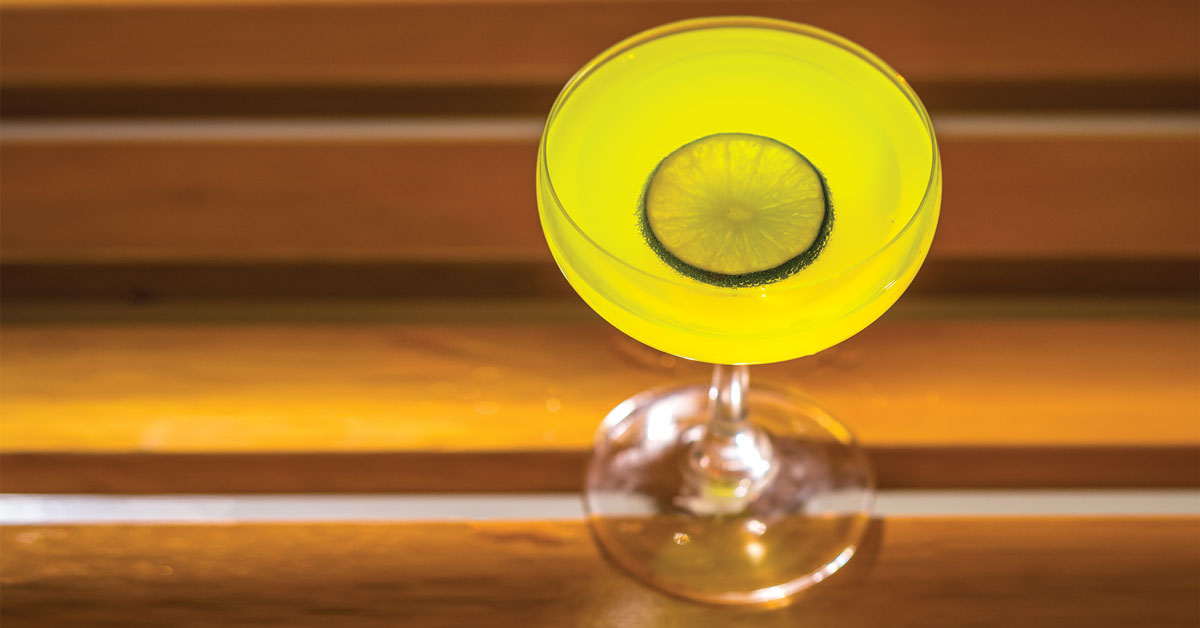
When Shannon Mustipher was opening Glady’s Caribbean in Brooklyn back in 2015, she devoted a lot of energy to dialing in her versions of classic tropical drinks at a time when the available rum selections were far more limited than they are today. One such cocktail was the Royal Bermuda Yacht Club. “I was interested in it because it posed a challenge for me,” she recalls. “Can I find the right rum to be able to pull this cocktail off?”
The original Royal Bermuda Yacht Club is essentially a variation on the Daiquiri calling for Barbados rum, lime, falernum and orange liqueur. The drink is often attributed to Trader Vic because it appears in his 1947 book, but the recipe was originally published six years earlier, in Crosby Gaige’s Cocktail Guide and Ladies’ Companion. Gaige included it in the section called Personal Accounts from Survivors, wherein culinary and literary figures of the day—James Beard and Lucius Beebe included—offer their favorite drink recipes. Mary Mabon, who was a food and drink editor for Harper’s Bazaar, offered the Royal Bermuda Yacht Club; the headnote says she first encountered it in situ in Hamilton, Bermuda.
Back in her Glady’s days, Mustipher came up with a version of the classic that featured a split base of rums from Barbados (Mount Gay) and Guyana (El Dorado). On top of that, she layered John D. Taylor falernum (also from Barbados) and dry Curaçao from Brizard or Ferrand, both of which contain Cognac and which Mustipher says married with the rums perfectly.
During those same years that Mustipher was working to find the ideal versions of classic rum cocktails, she was also captivated by the power that amari and aperitifs had to improve upon such drinks. She found herself spiking Planter’s Punch riffs with Becherovka and adding Cynar to rum-based Manhattans. After creating the Kingston Soundsystem, which is to the Jungle Bird what the White Negroni is to the classic Negroni, Mustipher saw the potential for Suze to help bring the Royal Bermuda Yacht Club into the 21st century, too.
In dreaming up this Royal Bermuda riff for her 2019 book Tiki: Modern Tropical Cocktails, Mustipher decided to swap out the aged rum and replace it with unaged rhum agricole while also removing the Curaçao in favor of Suze. “It gives the drink a drier, herbaceous element,” Mustipher says of Suze, “which balances out what you’ll see is a little bit of a salinity in the rhum agricole.” Both the gentian liqueur and the rhum agricole have a grassiness that reminds her of sawgrass—a distinctive fresh smell that recalls her roots in the American South. The resulting drink, Tour Le Carbet, is verdant, fresh and slightly bitter, with hints of almond and spices.
When it comes to the rhum agricole, Mustipher favors expressions that exceed 100 proof; the higher ABV, she says, helps to maintain balance within the drink. In Tiki, she suggests Neisson, a producer situated on the western coast of Martinique in an area called Le Carbet, from which Mustipher took the drink’s name. At the time, Neisson was one of the agricole producers that could be counted on to consistently offer higher-proof expressions. In the intervening years, Mustipher has tried others in the Tour Le Carbet, including Père Labat 59, another high-proof product from the French Caribbean, as well as agricoles from Mexican producer Alambique Serrano, which she says take the drink to a “far out” place.
Mustipher has seen some interest in the Tour Le Carbet on social media in the years since her book came out, but it hasn’t gotten the attention it deserves. She likens it to the Jasmine, a sophisticated Campari-laced gin sour that emerged in the late 1990s that she says was ahead of its time. “I kind of think Tour Le Carbet is one of those sorts of drinks,” she says. “Maybe somebody might circle back to it several years from now, and be like, ‘This is the shit.’”







